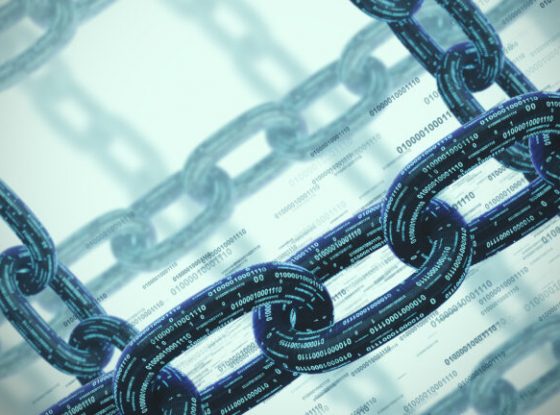4 ways to modernize your supply chain strategy

The COVID-19 pandemic changed everything, elevating supply chain awareness at all levels. It exposed cracks in global supply chains, highlighted known structural issues and became a household topic. And while consumer demand is soaring, suppliers are still challenged by shortages, raw material availability restrictions and the impact of out-of-balance global supply flows. The result? Escalating costs and unsatisfied consumers due to product shortages.
Our global supply chain was designed for largely stable and predictable supply and demand flows. And why wouldn’t it be? We haven’t had supply and demand shocks like this since the last world war. But now, the volatile supply and demand position we’re seeing in the wake of the pandemic is wreaking havoc with shortages in raw materials, containers, freight and finished goods. The situation is exacerbated by the increasing threat of cyber security predators who see the criticality of the global supply chain and the opportunity to drive ransom attacks on critical suppliers and infrastructure providers.
In addition to the challenges brought to light during the pandemic, new challenges have also emerged, such as the fallout from the Suez Canal and security concerns that reverberated across the industry from the Colonial Pipeline disruptions. These disruptions have had a dramatic impact on supply costs. Since November 2020, the cost to ship a 40-ft container from Asia to Europe has more than tripled while the cost to ship from North America to Asia has more than doubled.
As we face these new, near-term supply issues, we also have to address long-term structural and societal challenges. At a government and federal level, President Biden’s executive order on America’s supply chains makes it clear that the US is focused on strengthening supply chain resilience. At the same time, consumers and regulators worldwide are demanding more from corporations to meet broadened definitions of sustainability. This means moving beyond net-zero emissions to holistically integrate environmental, social and governance goals (ESGs) into business decisions to build supply chains that are not only profitable, but also responsible and equitable.
So, how can supply chain leaders find the right balance of meeting current needs while also delivering on longer-term priorities?
A new approach for supply chain success today
All these compounding challenges are driving the urgency behind the digital reinvention of supply chains. Building smarter, more resilient global supply chains requires a move to intelligent workflows, using AI and machine learning to predict demand and supply needs and automate workflows.
Large, multi-year CapEx programs are being replaced by agile supply chain development projects and strategic partnerships. A supply chain “garage” approach brings cognitive diversity from technology, designers, developers, enterprise resource planning (ERP) experts and workflow leaders together to address today’s issues while aligning on a long-term strategic roadmap. The garage approach allows organizations to deliver immediate benefits today, while keeping one foot in tomorrow and accelerating longer term structural change.
- Focus on optimization in the short term: Agile solutions and microservices can help address current issues like optimizing container shipping, reducing inbound supplier calls, increasing collaboration, improving demand forecasting and labor management.
- Accelerate the midterm focus on data: Intelligent workflows are built on a clear data strategy that combines AI and machine learning, embraces automation and facilitates horizontal integration and adjustments across organizational functions, enabling 360-degree visibility of the supply chain and potential disruptions.
- Strengthen the core: Make supply chain employees’ work more valuable by optimizing the human-technology partnership. Digital platforms and control towers provide a personalized, connected command center of data, key business metrics and events across the supply chain—all of which can help improve the user experience.
- Focus on cloud solutions and increased security: Security has become a key design aspect of supply chain process, data and architecture. Granular, real-time, security-rich data is a necessity for combatting supply chain challenges, now and in the future.
Strategic shifts for long-term growth tomorrow
Traditionally, supply chains have been designed on the assumption that materials flow freely around the world, enabling them to source, produce and distribute products at the lowest-cost locations around the world.
In this new era, however, we must shift our thinking to put customer needs at the heart of everything we do and build supply chains that can operate in volatile environments—be it a pandemic, a natural disaster, extreme weather events, human error or a cyberattack. Key principles, ways of working, physical networks and strategic partnerships must be examined closely, while sustainability is becoming increasingly important at the shareholder, employee and customer level.
A recent study that surveyed successful supply chain leaders revealed that they are making long-term investments for smarter supply chain strategies, with a whopping 70% saying they will use intelligent automation or AI to support demand management and forecasting in the next three years.
These intelligent supply chains will have the ability to understand demand signals and rapid changes based on a variety of factors, such as consumer behavior, imminent weather and seasonal surges. When organizations have advance knowledge of where disruption will come from and which products will be impacted, they have the lead time to execute avoidance and mitigation strategies immediately, shaping demand by offering discounts on substitutes, buying up inventory, controlling inventory allocations and more. They will be able understand patterns and changes in stock keeping units (SKUs) to manage risks and prevent shortages, and they will have critical processes in place to detect and contain cyberattacks and prevent further exploitation and damage.
An agile approach to supply chain transformation will help these leaders set strategic goals and tackle the most impactful structural changes first, scaling them up through the enterprise as needed. Whether it is helping customers respond quickly to disruption with SaaS-based solutions or guiding clients on full-scale ERP transformation, the supply chain garage approach will drive faster outcomes, increase the number of projects in production and exponentially increase overall ROI. The need for smarter supply chains will only become more urgent as time goes on, and there are many steps that supply chain leaders can take right now to set their organizations up for long-term success.
Source : ibm.com



